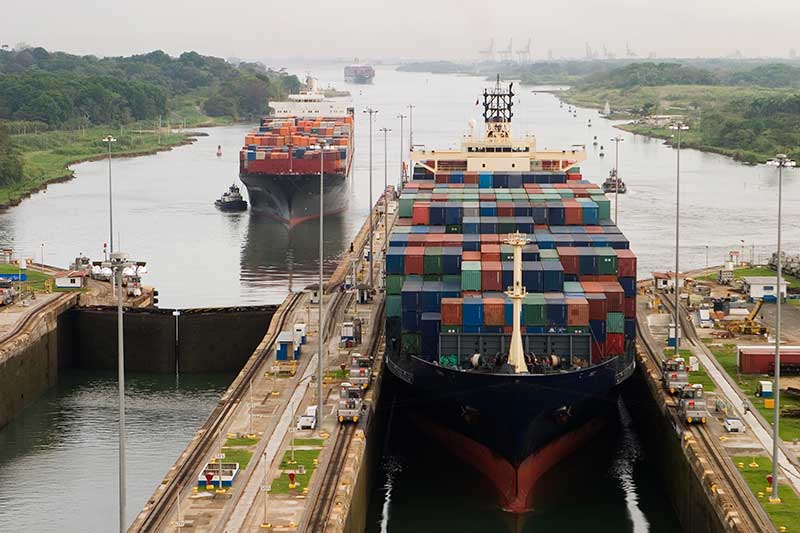Panama Canal Authority takes steps to increase daily transits set to take effect in January
Late last week, the Panama Canal Authority (ACP) announced it is raising the number of daily vessel transits to 24, effective January 16, 2024.
The current number of vessel transits is 22, ACP officials said, and are divided into six Neopanamax and 16 Panamax vessels, with scheduled increase bringing those numbers to seven and 17, respectively, next month.
ACP explained that these measures are due to what it called the “challenges posed by the current state of Gatun Lake, which is experiencing unusually low water levels for this time of year due to the drought induced by the by the El Niño phenomenon.” ACP recently observed that in 2023, there has been 41% less rain than usual, which it said has lowered Gatun Lake to what it called unprecedented levels for this time of year. And it noted that this presents significant challenges, for the Canal, until the completion of rainy season.
The Panama Canal’s maximum operating level is 88 feet, with its current level at 81 feet.
What’s more, October now stands as the driest October on record for the Canal Watershed, according to ACP, with the number of daily vessel transits initially changed to 22 in December, 20 in February, and 18 in February, with ACP stating that 2023 is the first time it has been forced to restrict transits. That comes with the caveat that November rainfall and lake levels were not as adverse as expected, said ACP, adding that last week’s announced adjustments are replacing previously-announced ones made on October 30 LINK, which were implemented in order to preserve fresh water resources and also to ensure the safety of transit operations like using water reutilization basins in the Neopanamax locks and also cross-filling in the Panamax locks.
“As 2023 is the second driest year in recorded history of the Panama Canal Watershed, the Canal has implemented an operational strategy focused on water conservation and transit reliability in the face of low rainfall and the consequent decrease in lake levels,” said ACP. “These measures, together with direct and proactive communication with customers, have proven essential in adapting to the difficult climatic circumstances.”
Chris Rogers, Head of Supply Chain Research for S&P Global Market Intelligence, told LM that these ongoing vessel restrictions should not make a difference in the overall level of shipping, while it will make a difference in terms of where everything goes.
“Do you do you just toughed it out and just say ‘alright, we'll get through the canal eventually,’ or do you instruct your shipping company to take an alternative route?” he said. “There's lots of options there. You could go to the West Coast ports and then rail from there. You could take the long way round, but not many shipping companies want to do that. You could go the very long way round and do a pendulum route from Asia via the Suez Canal, and then into the East Coast. There are lots of options there.”
Rogers added that S&P research, for October, showed that that share of U.S. imports, for leisure products, that went to East Coast ports, was well down on an annual basis, adding that some companies are taking steps to ty and stay away from the Panama Canal, to a certain extent.
And Jon Monroe, president and founder of Jon Monroe Consulting, explained in an interview with LM that the ongoing situation at the Panama Canal has been particularly tough on East Coast ports.
“It is worse than ever before,” said Monroe. “You’ve got the drought that is continuing and the reduction in the number of vessels. It is difficult for the East Coast ports, but you have a shift as businesses go to Southeast Asia and India, to the extent that [as] it moves in that direction, it lends itself more to East Coast ports than the West Coast ports. Everything is up in the air…it still hasn’t settled.”
The current situation could also lead to the return of mini-land bridge services, which he described as services that discharge on thew West Coast and moved cargo via rail to the East Coast.”
“While it is too soon to tell, if this is a prolonged drought, there might be no choice, but to use a combination of mini land bridge, and all water via the Suez Canal,” he said. “But the impact of the Panama Canal is more on the tanker side than it is on the container side. I am not saying container vessels won't be impacted. They will but not to the extent that the bulk tankers and those vessels are impacted. They're starting to reroute their services because it's getting too expensive.”













